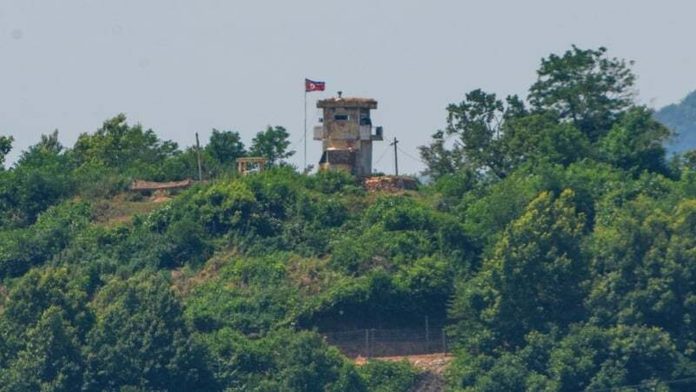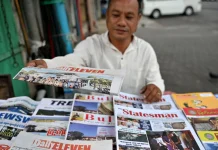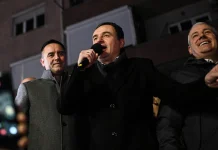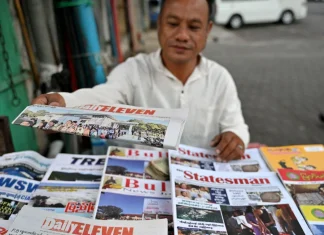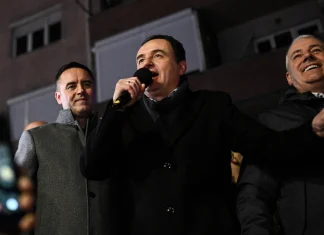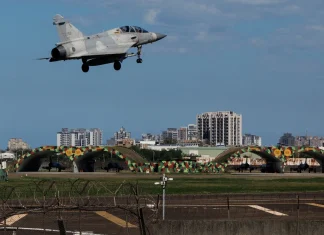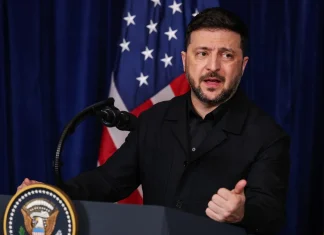On Edge at the Armistice Line: A Peninsula Poised on a Knife’s Edge
The sun dipped low over the jagged ridges that mark the infamous Demilitarized Zone (DMZ), a strip of land both barren and brooding, where history’s unresolved tensions play out in an uneasy silence. Yet, this time, the tension was punctuated by the sharp crack of gunfire—not a skirmish in a forgotten war, but a chilling reminder that the most heavily fortified border on earth still simmers with unresolved hostility.
Late last week, the world’s gaze shifted briefly to the Korean Peninsula as North Korea accused South Korean soldiers of firing warning shots near the border—an act Pyongyang says risks pushing the fragile peace into “uncontrollable” chaos. This is not just a military incident; it’s a raw thread in the fabric of a divided nation’s ongoing tragedy and complex diplomacy.
When Gunshots Echo a Legacy of Division
“It felt like the past was alive again,” said Seo Min-jun, a local farmer living just miles from the infamous frontier. “You never truly forget the war here… these shots, they bring back memories people want to bury.”
According to the statement from North Korea’s army lieutenant general Ko Jong Chol, the incident unfolded amidst North Korean soldiers attempting to permanently seal the border—a symbolic and practical move to further entrench division. The North’s state-run Korean Central News Agency reported that South Korean forces fired over ten warning shots from machine guns, a response to the northern troops’ disruptive activities near the ceasefire line.
South Korea’s Joint Chiefs of Staff confirmed that warning shots were indeed fired, with the aim of deterring the North Korean soldiers who had approached the military demarcation line. The North replied forcefully, labeling the event a “serious provocation,” and intimating a warning shot across the region’s already fragile diplomatic waters.
The DMZ: More Than a Strip of Land
Stretching 250 kilometers across the peninsula, the DMZ is at once a verdant sanctuary and a stark fortress. It is heavily mined, guarded by hundreds of thousands of troops on both sides, and riddled with observation posts. Yet despite the militarized gloom, the zone has become an unexpected haven for wildlife, where cranes glide over abandoned trenches and leopard cats sneak through thick brush.
Officials and locals alike recounted the cold proximity of soldiers standing watch just meters apart, separated by a barely perceptible border painted in frozen lines on cracked earth.
“Thousands live with a constant hum of tension that never quite breaks into open conflict,” explained Dr. Han Ye-seul, a conflict analyst specializing in the Korean Peninsula. “What we witnessed this week is emblematic of how quickly misunderstandings or deliberate moves can spiral—every shot fired echoes beyond the valley.”
Promises of Peace Amid Persistent Provocations
South Korea under President Lee Jae Myung has symbolized cautious optimism. Elected on a platform of dialogue and military trust-building, Lee’s gestures toward reconciliation form a sharp contrast to his predecessor’s hawkish stance. Only days before the border incident, President Lee vowed to restore trust “without preconditions” and embarked on a campaign to ease the peninsula’s relentless strains.
Yet, as Seoul extended an olive branch, Pyongyang remained resolutely defiant. The North has consistently dismissed any overtures, with its leader Kim Jong Un calling for a rapid expansion of nuclear capabilities in direct response to annual US-South Korea military exercises that Korea’s North views as rehearsals for invasion.
“There’s a dual narrative playing out,” noted Hong Min, senior analyst at the Korea Institute for National Unification. “On one hand, calls for dialogue flow from Seoul, while military preparations continue. Pyongyang, suspicious and combative, interprets this as duplicity and responds accordingly.”
Military Exercises: Dance of Defiance and Defense
Every year, joint military drills between South Korea and the United States inject fuel to an already volatile situation. Starting just days before the recent firing, these exercises emphasize readiness to counter potential threats from the North. President Lee described them as “defensive” in nature, but Pyongyang issued stark warnings that such activities risk “igniting a war.”
To many South Koreans, the drills are a necessary reminder that peace hangs by a thread. But to North Koreans, they are a looming shadow of invasion.
The Human Cost: Lives Between the Lines
Walking near the Jogang Observatory, where South Korean officers routinely scan the northern landscape through binoculars, one can’t help but wonder about the soldiers caught in this ceaseless standoff. Both sides are often only meters apart, yet worlds away in trust and intent.
“War doesn’t always start with grand declarations; sometimes it begins with a single misunderstood gesture,” said retired ROK soldier Kim Tae-hyun. “You learn to hold your breath, to be ready, but also to hope none of these moments explode into battles.”
For civilians on both sides, the constant military vigilance permeates daily existence. While the North continues to harden its border, even blowing up symbolic roads and railways connecting the two Koreas, ordinary people bear the weight of division—the separation of families, cultures, and futures.
Looking Beyond the Gunfire: What’s at Stake?
This border incident should provoke more than just concern over military readiness; it demands reflection on the human and geopolitical stakes. The Korean Peninsula remains one of the most dangerous flashpoints in the world—a place where war is a memory and a possibility simultaneously.
As readers from Mumbai to Madrid, Lagos to London, pause over this story, it’s worth asking: What do we owe to places like the DMZ? How should the international community respond to a conflict that could escalate with a single wrong shot? And perhaps most importantly, how do fractured nations build bridges over landscapes scarred by decades of mistrust?
Despite decades of hostility, glimpses of hope persist amidst the shadows—the occasional thaw in diplomacy, cultural exchanges, and shared recognition that peace is a hard, often fragile, collective act.
In the Shadow of History, Towards an Uncertain Future
The latest exchange of gunfire at the border is a stark reminder that beneath talks of nuclear weapons and strategy lie human stories of fear, longing, and endurance. The outlines of a peninsula torn asunder ripple into global conversations about security, dialogue, and the possibility of coexistence.
“What happens here touches us all,” Dr. Han concluded, her voice tinged with both urgency and hope. “It’s not just a regional dispute—it’s a question about the paths humanity chooses when faced with division. Will walls define us, or bridges?”
As daylight fades over the DMZ once more, one is left with an uneasy lull. For now, the guns have quieted. But the trembling heartbeat of the peninsula’s future pulses just beneath the surface, waiting for the next moment of either collision or conciliation.


